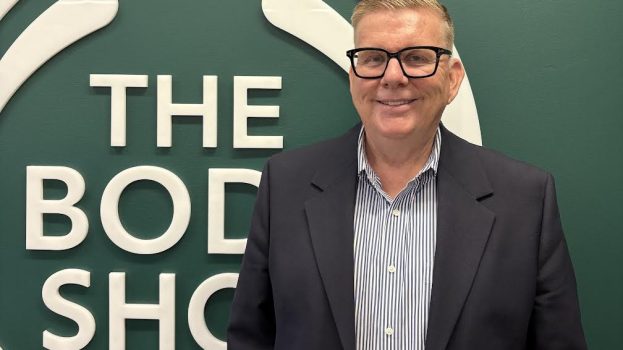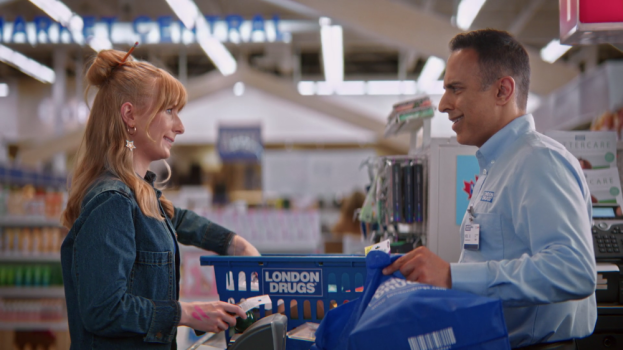Since the creation of the first fake-tanning products in the 1960s, we have had a safer alternative to baking ourselves in the sun. A slew of new products has continued to roll out, each one allegedly giving a sun-kissed look to even the pastiest complexion. But after a few botched attempts resulting in nothing more than orange blotchy streaks that faded as quickly as they were applied, a lot of consumers headed straight back to the beach.
The lack of confidence in this ‘tan-in-a-can’ category has yet to be overcome. Despite the increasing number of products available, sales of prestige self-tanners in U.S. department stores registered no growth in 2001, according to Port Washington, N.Y.-based market researcher, NPD BeautyTrends. But today, as doctors continue to issue warnings about the risk of skin cancer and premature aging, manufacturers are putting more and more resources into creating and marketing blotch-free self-tanning lotions and tan-enhancing cosmetics.
Revlon Canada, for example, launched a limited edition collection of self-tanners into its Skinlights cosmetics range this month, including Self Tanner and Face Illuminating Powder (both priced at $19.95).
‘These products were launched to answer the need of consumers who don’t want the coverage of traditional foundation but want to smooth out imperfections and brighten skin without sun damage,’ says Jacquie Hutchinson, national product trainer at Mississauga, Ont.-based Revlon Canada.
The Skinlights range, which Hutchinson says is targeted at the broad demo of 15- to 48-year-olds, is currently being advertised extensively in women’s fashion and beauty magazines including Vogue and Chatelaine, and on national TV. Created by Los Angeles-based Deutsch, the ads push the message that Skinlights’ products give a natural-looking sunkissed glow, Hutchinson says. And PR efforts have resulted in considerable editorial coverage. The summer beauty collection is available in drugstores and mass-market retailers nationwide until September.
Meanwhile last month, Mississauga-based Schering-Plough Healthcare held a street program to promote its Coppertone Endless Summer self-tanning lotion. Models wearing the self-tanning product on half of their bodies hit the streets in Toronto and Vancouver.
‘When the self-tan category first launched, the technology behind it wasn’t as sophisticated as it is now and a lot of products gave an orangey tone, so sampling is the best way of letting people know that this product really does work,’ says Kim Cornofsky, account coordinator at Toronto-based Cohn & Wolfe, the agency behind the event.
An aesthetician also accompanied the models, providing passers-by with tips for applying the sunless tanner effectively. And more than 25,000 free sample sachets were distributed during the single-day event, together with a coupon for $1 off a product purchase.
Endless Summer, which launched in Canada last summer, claims to be more effective than its competitors due to the presence of the colour-activator Hydrosil, an agent that speeds up the development of DHA (dihydroxyacetone, the active ingredient in all sunless tanners). The packaging is designed with two chambers to keep the two ingredients separate. And its fast-working capabilities give further appeal to time-strapped consumers, Cornofsky says. It is sold at drugstores and mass merchandisers at a cost of $16.
Estée Lauder held demonstrations last month to promote its Go Bronze tinted self-tanner. Consumers were treated to professional airbrush facial applications at Eatons department stores in Toronto, Ottawa and Vancouver. The ‘Ways to Glow’ event, which was organized by Estée Lauder’s New York-based in-house special events team, will be repeated later this month at The Bay in Hamilton, Ont.
The Go Bronze collection is particularly appealing to wary consumers, according to Judi Barr, Estée Lauder Canada’s manager of global communications, because its tinted colour allows them to see exactly where it has been applied and to spot any gaps before colour-development takes place.
This summer Estée Lauder added a new dimension to the category with its Tan Extender products for face (retailing at $26 for 50ml) and body (retailing at $27.50 for 150ml.) The products, which form part of Estée Lauder’s new Liquid Summer cosmetic collection, have a twofold effect, Barr says. They can be used to slowly build a tan from scratch or to maintain an existing tan. Although no Canadian advertising has yet taken place around this launch, Barr says sales are benefiting from ads running in U.S. fashion and beauty mags that were created by the company’s in-house ad team in conjunction with U.S.-based A/R Media, that show the effectiveness of the products. In Canada, marketing efforts consist largely of in-store advertising, counter promotions and demonstrations, as well as PR-generated editorial coverage.
And L’Oreal’s Ombrelle brand made its first foray into the category this April with the launch of Sunless Tanning Spray Lotion and Sunless Tanning Face Cream which both contain SPF 15. According to Chris Tung, brand director at Montreal-based Ombrelle, the brand’s focus on health issues sets its products apart from competitors. ‘Ombrelle is a serious brand for the higher income health-conscious woman in the 25-to-35 age group,’ he says. With this target in mind, Ombrelle promotes the idea of health and skin-protection in all of its marketing efforts, he says. This summer the manufacturer began promoting its new products in-store to attract the existing purchasers of Ombrelle’s sun-protection range. The two new products are being marketed together in a specially designed promotional dual-pack.
Ombrelle has also teamed up with Sainte-Foy, Que.-based sports-focused radio station CHRC to push the new products to health-conscious outdoor types during six of the Sunday shows, Acces Plein Air, this summer.
Despite the huge selection of fake tanners on the market today, consumer confidence has been jaded by those failed sunless-tanning attempts of years ago. So what should marketers do to change the perception of these products? And how can one product be distinguished from another in the current crowded marketplace? Strategy asked four marketing experts.
Kelly Frances
Manager of new business development
Strategies International, Toronto
Kelly Frances recommends educating the consumer with live demonstrations and packaging that distinguishes the product from competitors.
‘People have had a lot of orange-and-streaky skin experiences with these products in the past so there is obviously a lot of skepticism that needs to be overcome. Word of mouth is the best way of building up confidence. If you get one consumer with a natural looking, streak-free tan then the message will spread. The ideal way to achieve this is through a demonstration to show the consumer what the end result will look like.
‘There are a lot of TV ads showing the results but the average consumer won’t always be convinced by what they see on TV. A live demo in the street or in a drugstore is probably a better way of doing it. Consumers want the opportunity to try a product before they buy, but trying a tester in a drugstore doesn’t always give good results, so you have to give the consumer a first-hand experience.
‘Marketers also need to distinguish their product from the huge range of options in the marketplace. They need to create a good first impression by coming up with an appealing packaging design.
‘There are a few products available on the cosmetic counters and in skin-care aisles that have an orangey-yellow package. That seems strange to me, as that colour is exactly what the consumer wants to avoid. The best choice of colour is a slick, simple one that creates the impression that this product will help you achieve a natural-looking, flawless, streak-free tan. Distinguishing between light and dark variations through the colour of your packaging might attract consumer interest.
Carol Clark
Account director
Saatchi & Saatchi Drum, Vancouver
Carol Clark advises direct marketing as a useful way to attract a younger audience, together with Web and in-store advertising.
‘It’s very much a younger demo product. I would suggest direct marketing as a very good and inexpensive way of focusing on the core 19- to 30-year-old consumer. Get the product into value packs and coupon books that are sent out to this audience, offering them a discount. Focusing on appearance rather than health benefits in your advertising is probably the best way of reaching younger people.
‘Media buys in mags like Chatelaine and Flare would be worthwhile, with a tear-out coupon to attract attention. Online banner ads are also a good way of reaching targeted audiences. Marketers could be posting ads on beauty or hair-care Web sites, for example.
‘In-store ads showing the end result are also bound to be successful in this category because they tend to catch your eye, even if you weren’t really looking for that kind of product. It may also be worth advertising in tanning spas as a way of accentuating or maintaining a tan. Conducting focus groups to find out exactly who is buying these products would also be very worthwhile.’
Pascale LeBlanc
Founder, Youthopia, Toronto
Pascale LeBlanc recommends a strong message about the health benefits of sunless tanners. To attract the youth demo she suggests emphasizing the fun elements of fake tanning through advertising, and creating a youth contest.
‘Marketers need to communicate key information about health issues to ease the minds of young men and women. For example, they should point out that the product contains DHA (which has been approved by the FDA and Health Canada) and that you can have the best of both worlds – a golden brown hue and no skin damage.
‘They also need to emphasize the point that sunless tanners are temporary, not a long-term commitment, and that they are better today than they have ever been before.
‘To attract the youth demo marketers need to make sunless tanners into a great experience with fun taglines such as: You don’t have to chase the sun to look like a golden god or goddess; Have fun and just fake it yourself.
‘Through advertising they can suggest ideas and tips on how to have fun when applying the product, such as getting someone else to apply it for you. Teens can get their friends together and have a Faking It party, for example. And marketers can provide a safe tan step-by-step guide within the packaging.
‘Another idea is to create a contest asking teens for the best ways to apply a sunless tanner, for a chance to win a Faking It dance party.’
Maria Kennedy
President and CEO
Karacters Design Group, Vancouver
Maria Kennedy recommends putting the brakes on traditional advertising in favor of sampling programs.
‘The younger market is really a lot more accepting of this kind of product and a lot less skeptical than older consumers, but they are also more demanding. They want to know the outcome before they buy, so I don’t think traditional advertising will speak to them at all.
‘You need to adopt an innovative sampling program with free giveaways, and get the product to the girls in their own environment, such as university campuses.’























